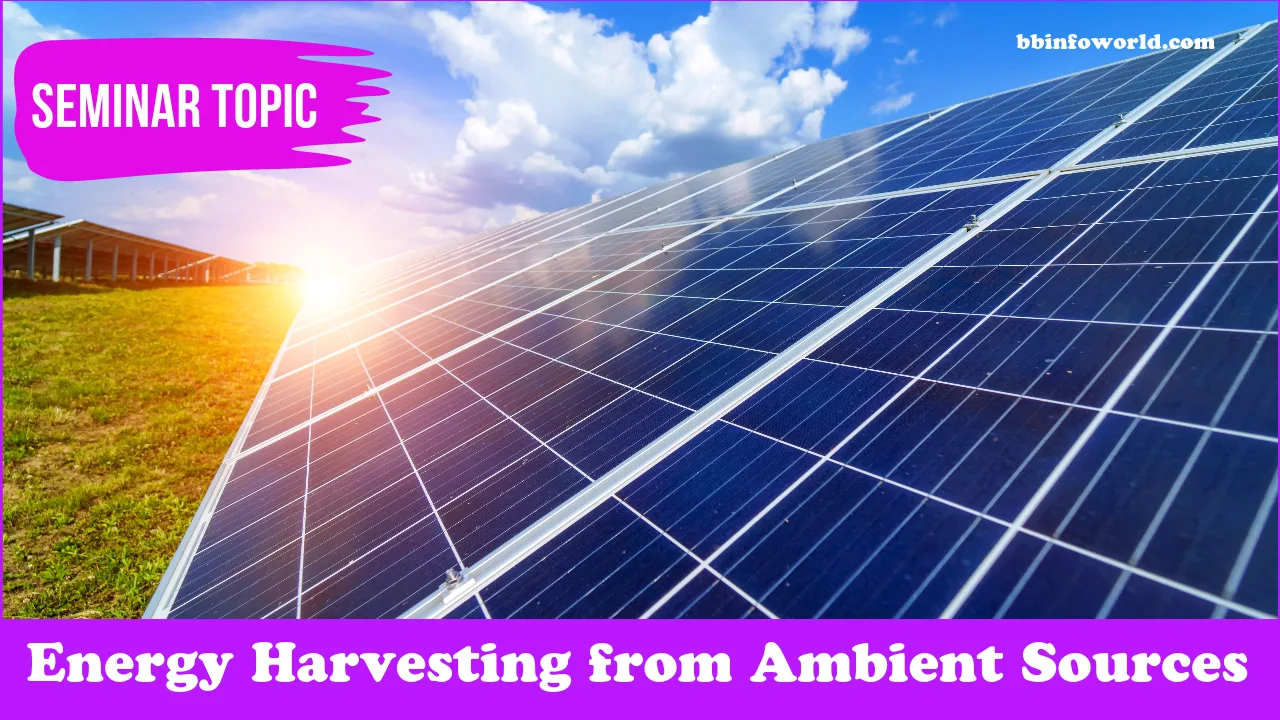
Energy Harvesting from Ambient Sources
Explore techniques to capture and convert ambient energy sources (such as solar, kinetic, and thermal energy) into usable electrical power for autonomous devices and IoT applications.
Energy Harvesting from Ambient Sources:
Energy harvesting from ambient sources is a groundbreaking field within electrical and electronics engineering that focuses on capturing and converting various forms of naturally occurring energy in the environment into usable electrical power. This energy can then be harnessed to power small electronic devices, sensors, and even Internet of Things (IoT) applications, eliminating the need for traditional batteries or external power sources.
Importance of Energy Harvesting:
The traditional reliance on batteries for powering electronic devices has limitations such as limited lifespan, maintenance requirements, and environmental impact due to battery disposal. Energy harvesting provides an eco-friendly and sustainable alternative, enabling devices to operate continuously by continuously replenishing their power supply from the surrounding environment.
Ambient Energy Sources:
- Solar Energy: Photovoltaic (PV) cells capture sunlight and convert it into electrical energy. These cells can be integrated into various surfaces, such as rooftops or wearable fabrics, to generate power from sunlight.
- Kinetic Energy: Mechanical vibrations, motion, and oscillations in the environment can be harvested using piezoelectric materials that generate electric charge when subjected to mechanical stress.
- Thermal Energy: Temperature differences between two surfaces can be converted into electrical energy using thermoelectric generators (TEGs), which rely on the Seebeck effect to create a voltage difference.
Techniques for Energy Conversion:
- Photovoltaic Conversion: Solar panels consist of semiconductor materials that absorb photons from sunlight and release electrons, generating a flow of electrical current.
- Piezoelectric Conversion: Piezoelectric materials, such as certain crystals or polymers, generate an electric potential when subjected to mechanical stress or vibration.
- Thermoelectric Conversion: Thermoelectric materials create a voltage difference when there’s a temperature gradient across them, allowing for the generation of electricity from heat.
Applications:
- Wireless Sensor Networks: Energy harvesting is particularly valuable for powering wireless sensors deployed in remote or inaccessible locations, such as environmental monitoring systems, agricultural sensors, or structural health monitoring.
- Wearable Devices: Energy harvesting technologies can be integrated into wearable electronics, such as smartwatches or fitness trackers, to capture energy from the user’s movements or body heat.
- IoT Devices: Many IoT devices require low levels of power and can be powered by harvested energy. This includes smart home sensors, industrial monitoring devices, and asset tracking systems.
Challenges and Considerations:
- Energy Density: Ambient energy sources often provide low power densities compared to traditional energy sources, which requires efficient energy conversion and management systems.
- Energy Storage: Energy harvested may not be immediately needed, so efficient energy storage solutions like supercapacitors or rechargeable batteries are essential.
- System Efficiency: Energy conversion and storage systems need to be designed for optimal efficiency to ensure that a significant portion of harvested energy is usable.
Future Prospects:
As energy harvesting technology continues to advance, it holds the potential to revolutionize how we power small-scale electronics and IoT devices. It can lead to more sustainable and environmentally friendly solutions while reducing the reliance on disposable batteries.
Conclusion:
Energy harvesting from ambient sources represents a promising avenue for sustainable energy solutions in the realm of electronics. By capturing and converting energy from sources like solar, kinetic, and thermal, we can power a wide range of autonomous devices and IoT applications, contributing to a greener and more energy-efficient future.



